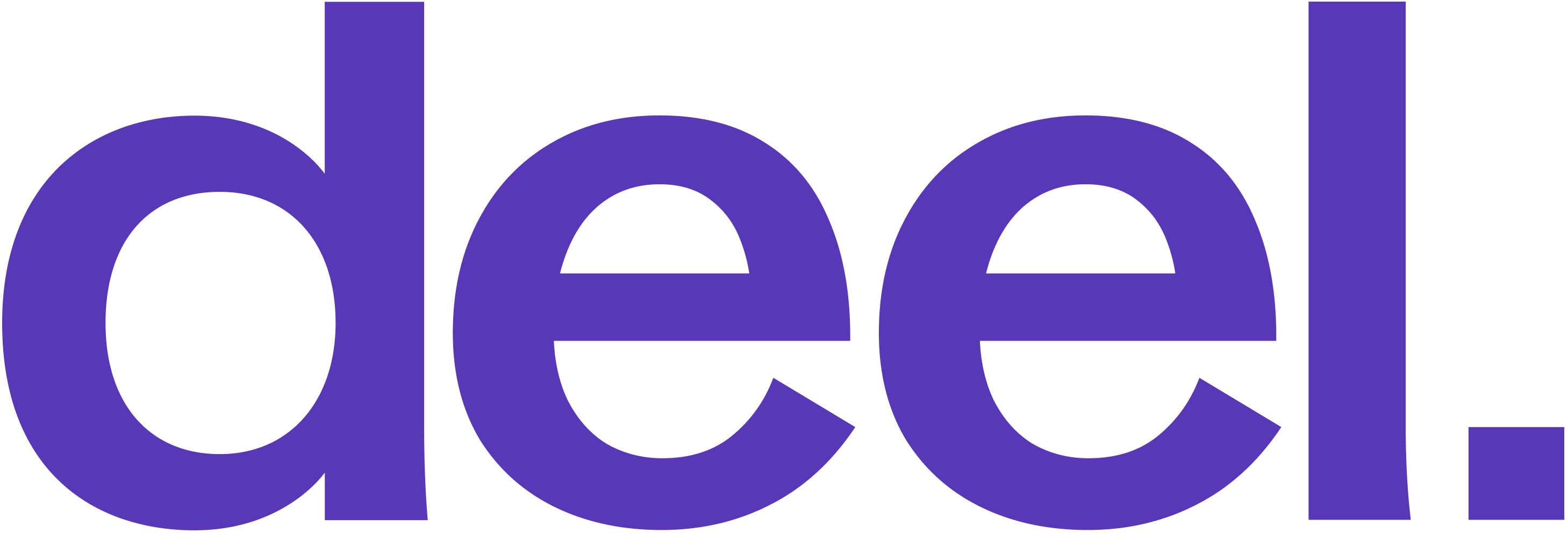Salary Transparency | Practical Tips for Compliance and Recruitment Marketing
6 minute read
With new legislation going into effect across multiple US jurisdictions (Colorado, California, Washington, and others), more and more companies are now obligated to post salary ranges on at least some of their jobs. This trend is expected to continue.
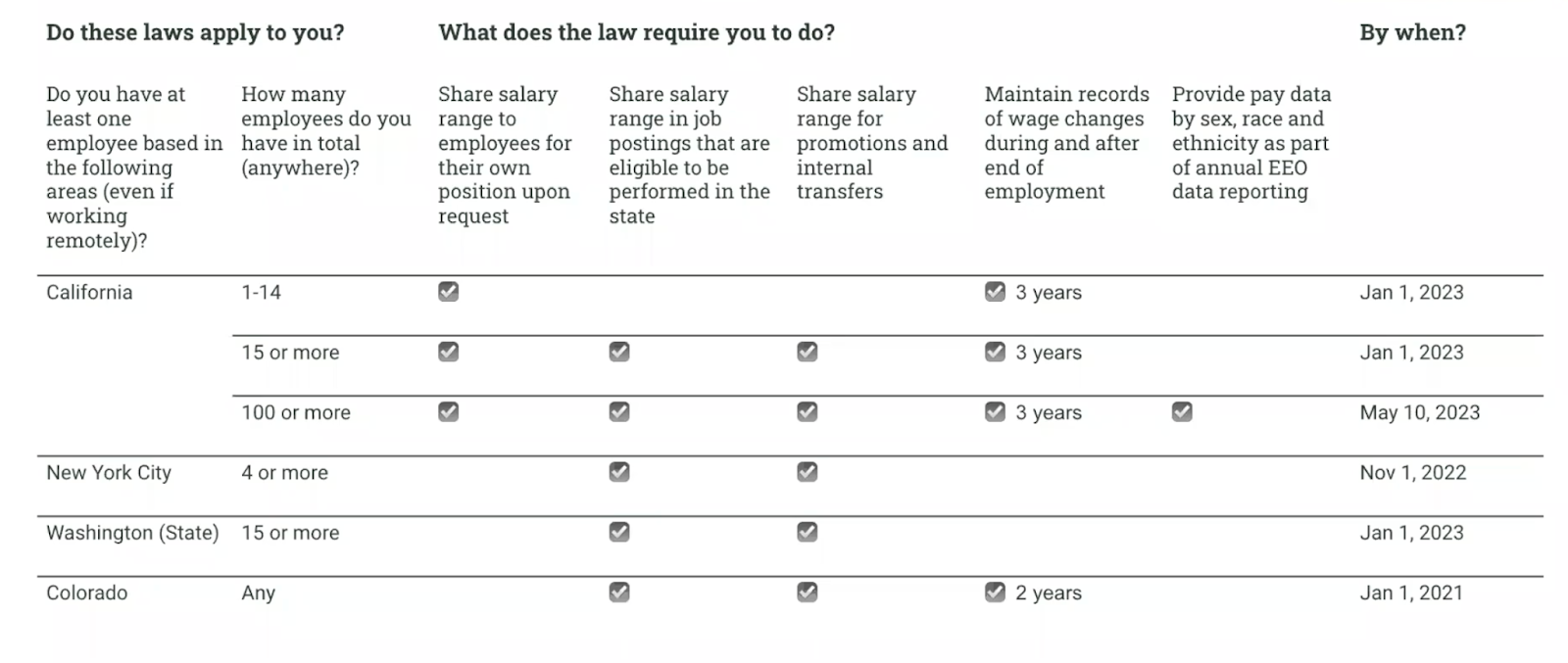
Source: Meghana Reddy / Alamere
At Ashby, we’ve been developing a set of features to help companies be compliant and, if they so chose, improve their recruitment marketing by including compensation on job posts with a varying degree of transparency.
As we’ve been speaking to our customers and other folks in the industry, we’ve been getting a lot of interesting questions around best practices. This post sums up our thoughts — and touches on a few key elements of Ashby’s new pay transparency feature. We hope it’s helpful!
How transparent should you be?
The approaches we’re seeing largely fall into two camps. Companies are either focusing primarily on being compliant or they are using this chance to change how they handle compensation throughout the hiring process. We’ll explore both approaches.
Approach 1: Compliance only
As most regulations go, it’s relatively easy to meet the baseline requirements. We’re seeing some companies choose the path of minimal change and focus entirely on compliance.
The easiest way to comply is:
- Post salary ranges only on job postings that require it (because you are hiring in a jurisdiction that mandates it)
- Post ranges only on the job postings in the jurisdictions that require it
- Post large salary ranges
Ashby now allows our customers to add compensation tiers to their job posts. An approach that focuses only on compliance may end up looking like this:
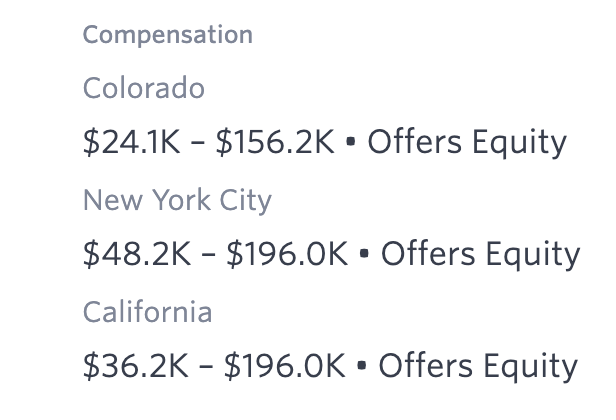
While this minimal approach is totally acceptable, there are some downsides to it:
- If more companies share complete and more meaningful compensation data, it may make your organization look bad in comparison.
- Very broad compensation ranges can make conversations with candidates tricky; many will assume they should be ranked at the higher end of the range, even if the evaluation during the interview process doesn’t support that.
As a result we’re seeing more companies using this regulation as an opportunity to bring salary data to all of their job posts in a way that is designed to improve candidate experience and the overall hiring process.
Approach 2: Sharing compensation data to improve the hiring process
An alternative approach is to start advertising compensation on your roles more generally, giving you the opportunity to share your compensation philosophy publicly. We are seeing more and more companies take this tactic and go beyond pure compliance.
The main downside to this approach is that it takes a lot of work internally. Especially for larger organizations, being able to publish compensation data externally may take a lot of internal pre-work. If compensation bands were not shared internally up until now, that will likely have to be done concurrently with posting compensation data on jobs.
That said, if you’ve been considering formalizing your compensation bands, now is a great time to prioritize that initiative.
Different ways to present your compensation data
Independent of your level of transparency, you will also need to decide how you want to represent your compensation data. We’re seeing companies take a number of different approaches — we’ll explore different options and their tradeoffs below.
Providing granular compensation vs. total compensation
Netflix is well known for its unique culture and compensation philosophy. They express compensation on job posts as “total compensation,” which consists of salary + bonus + equity (with a wide range.) They also share their compensation philosophy. Here’s an excerpt from a job posting for a workplace management role at Netflix:
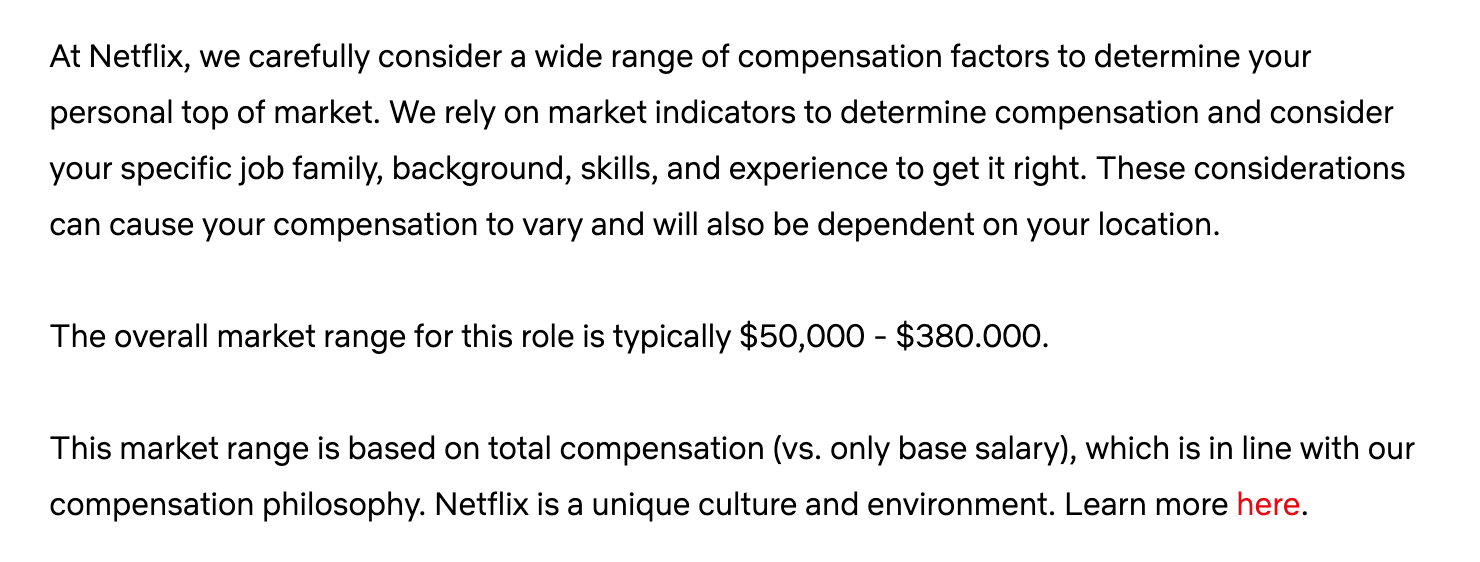
The alternative is to break out different components of your compensation, for example, cash vs. equity. The right approach mostly depends on your audience and how familiar they are with the standard compensation structure at your company. For instance, calling out equity compensation specifically may make sense when advertising jobs in markets where candidates are less familiar with receiving equity as part of their compensation package:
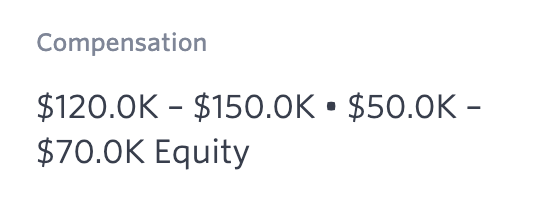
And for earlier stage startups it often makes sense to represent equity as a % of the company instead of a $ value, as shown below:

If you’re using Ashby, our pay transparency feature allows you to structure this data whichever way you like. Here’s a quick preview:
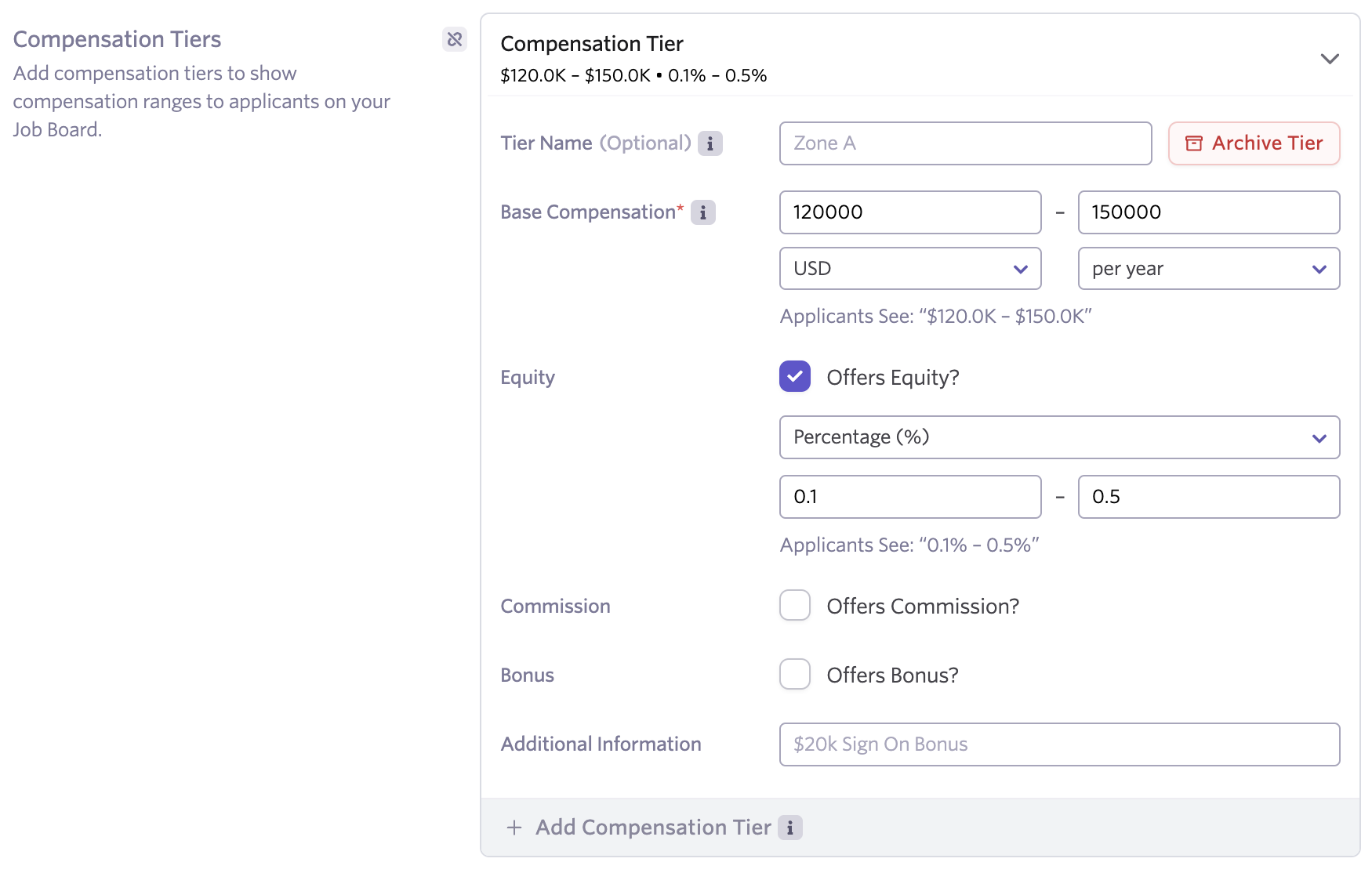
Tiering
For some roles, you may have multiple compensation tiers (most commonly based on seniority and/or location). You can either represent the entire compensation band as one wide tier, or you can share more granular tiers with candidates. Your approach will depend on how you organize jobs and job postings for your roles within your ATS.
Here are a few different approaches:
- Create separate job posts for every tier, by location and/or seniority
- Create separate job posts for locations, but tier by seniority within each post
- Create separate job posts for seniority, but tier by location within each post
Tiering by seniority
With this system, you organize job postings primarily by location, then show seniority tiers within the job post. For instance, you may have a job posting called “Customer Success Manager - US” with the following tiers:
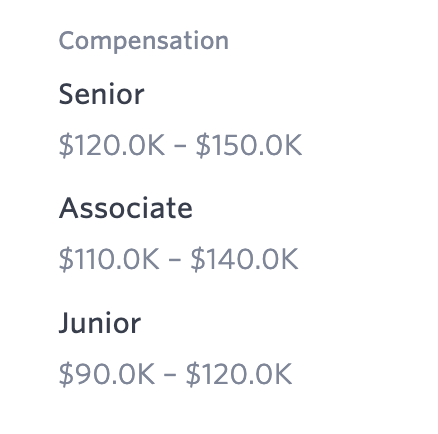
Tiering by location
With this method, you have job posts organized by seniority of candidates. So you may have a job posting called “Senior Customer Success Manager.” Within that job post you then organize by location:
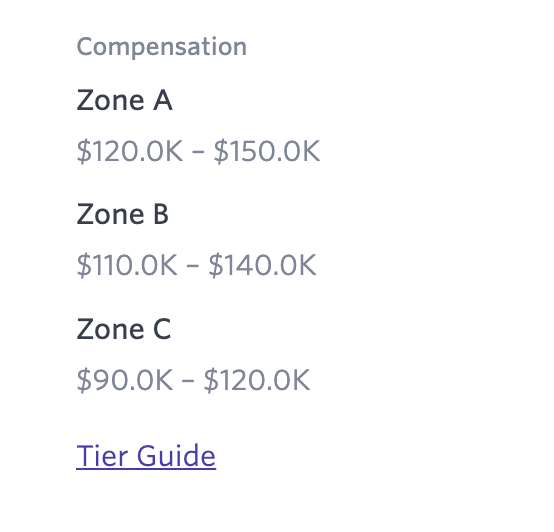
If you are using location-based compensation and have some definition of different location tiers, we recommend including a guide in your job descriptions such that candidates know which compensation band would apply to them.
Placing on the job board overview
If you’re aiming to go beyond compliance, you may also want to advertise compensation at the job overview level on your job board. Ashby customers can choose if they want to only share compensation in the job post itself or also want to share it in the overview.
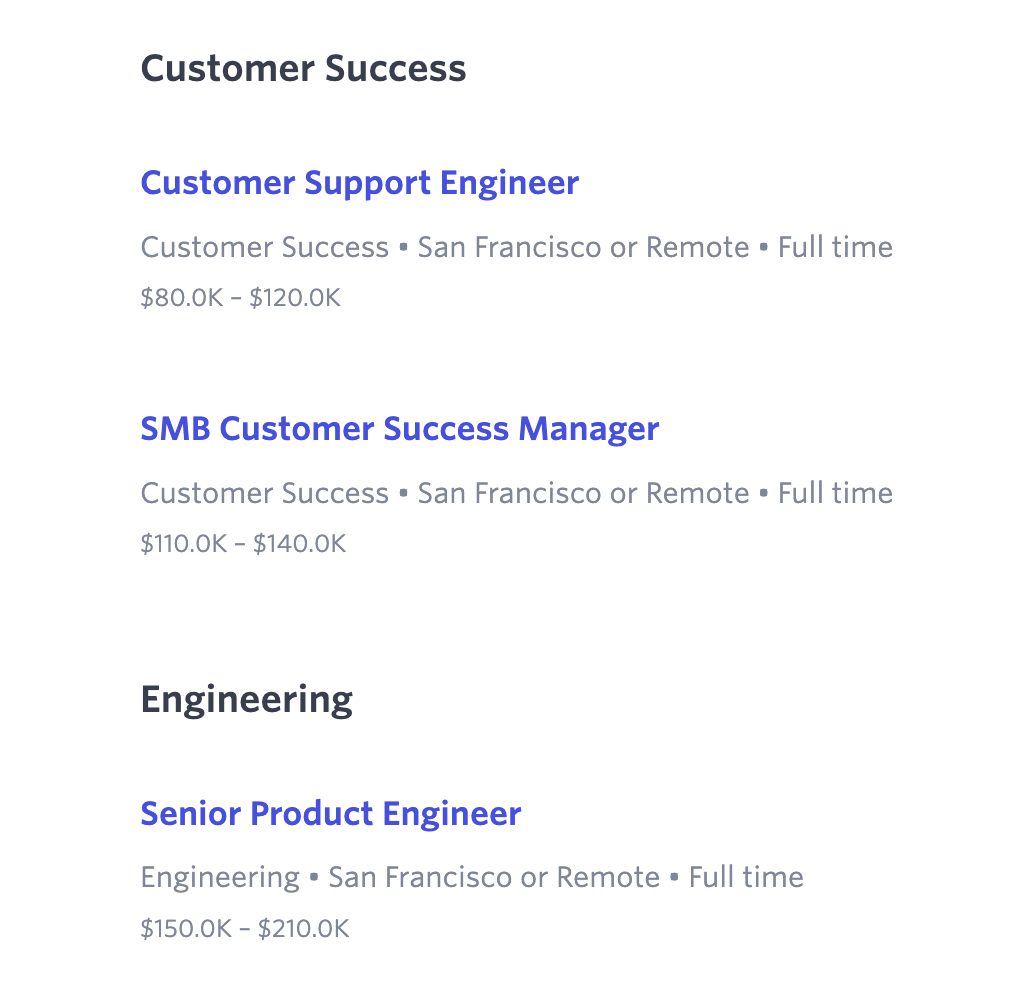
This approach will immediately make you stand out as a company that embraces salary transparency which, historically, has led to a higher rate of inbound applications.
Enforcing compliance
To ensure compliance with new regulations going forward, you should put a solid system in place. This will be a lot easier if you’re using an ATS, as you can configure job approvals which will allow your team to review any new job postings before they go live.
Within Ashby’s pay transparency feature we even allow you to block jobs from being posted if they don’t show compensation. You’re able to choose if compensation should be required on all job postings or only within specified locations.

In summary
The new regulations around salary transparency bring some extra work to recruiting teams. But they’re also a great chance to revisit your compensation and recruiting philosophy overall and implement some larger changes in how you and your candidates talk about compensation throughout the interview process.
This change will have many results, one being closer collaboration between talent and people functions. We’re confident that that collaboration will be a huge benefit to everyone.
We hope the guide above is helpful in getting answers to some of the easier tactical questions involved in this change.

